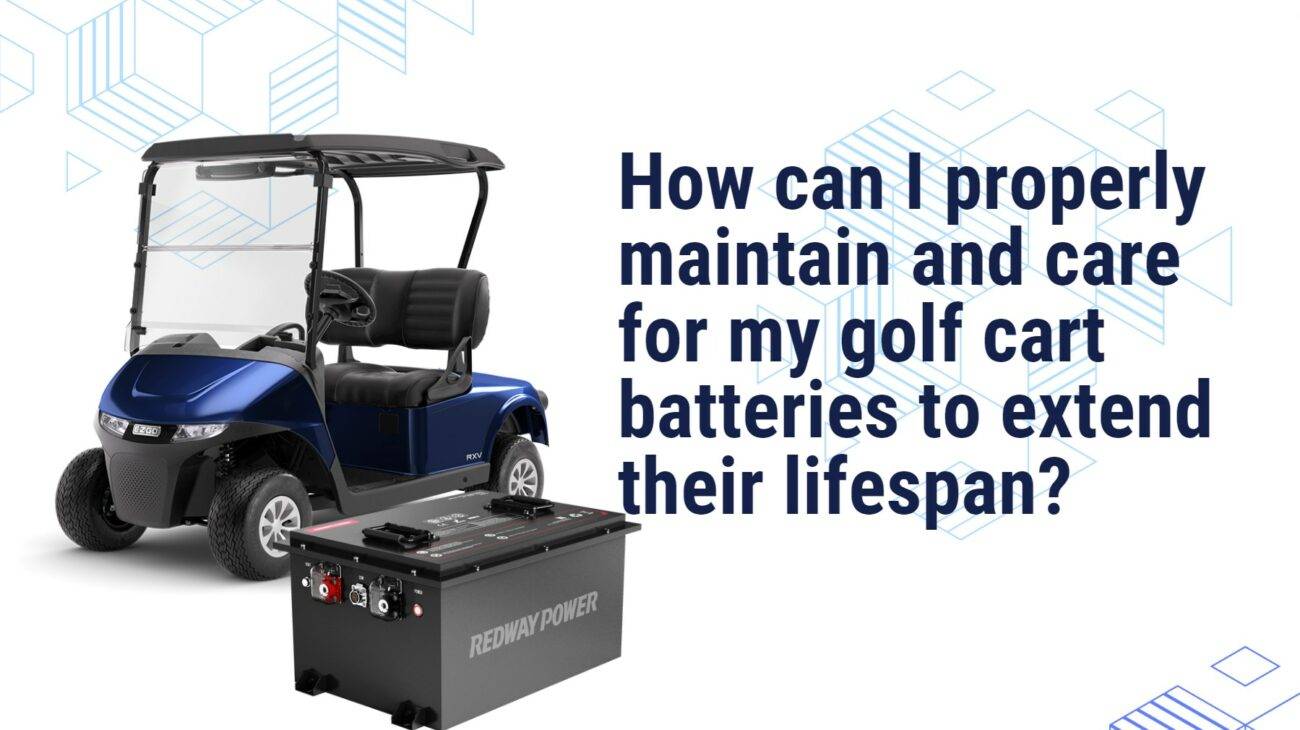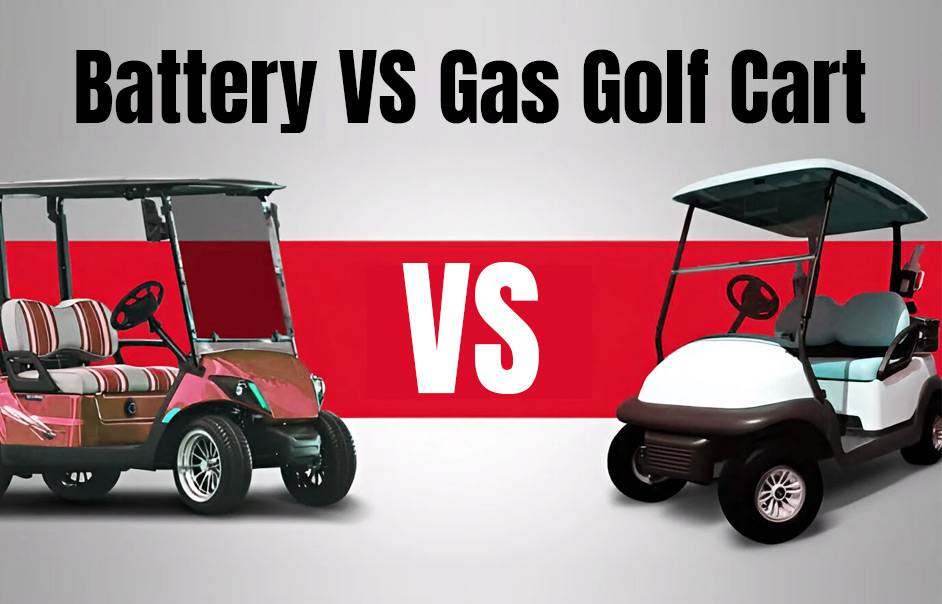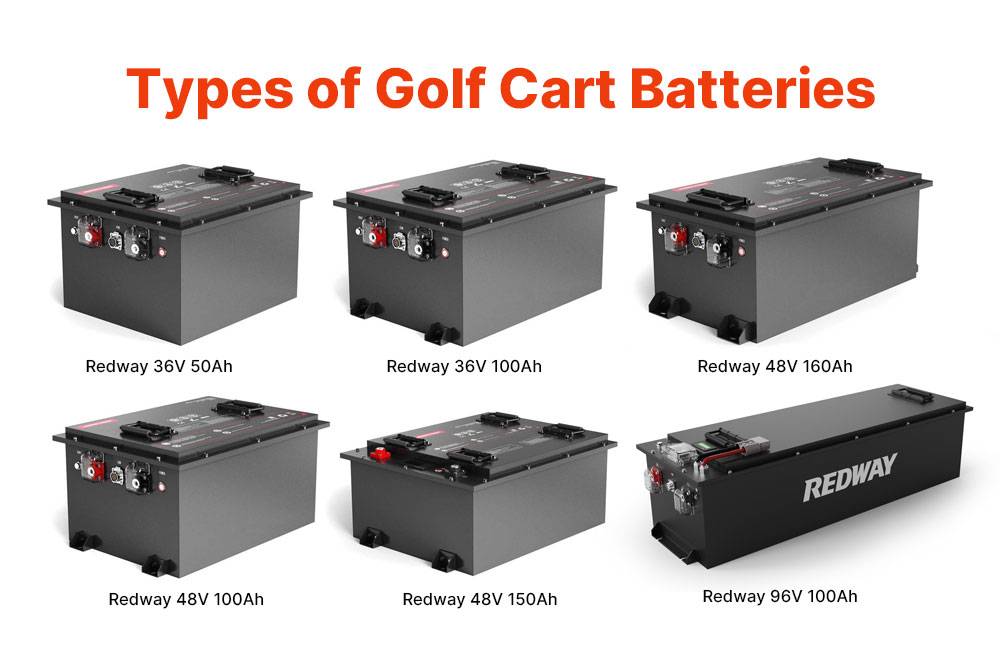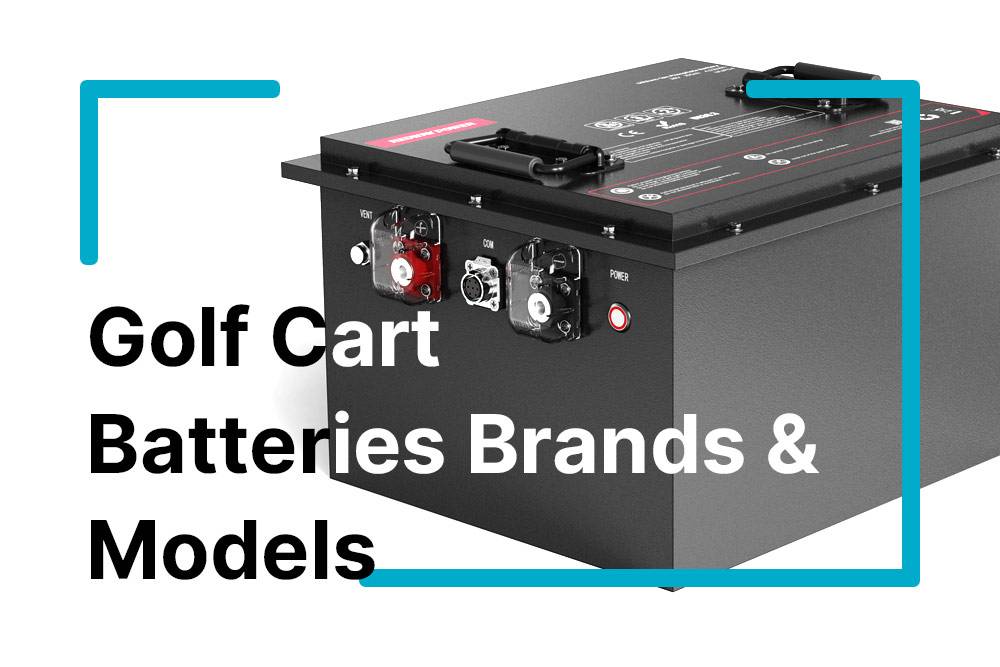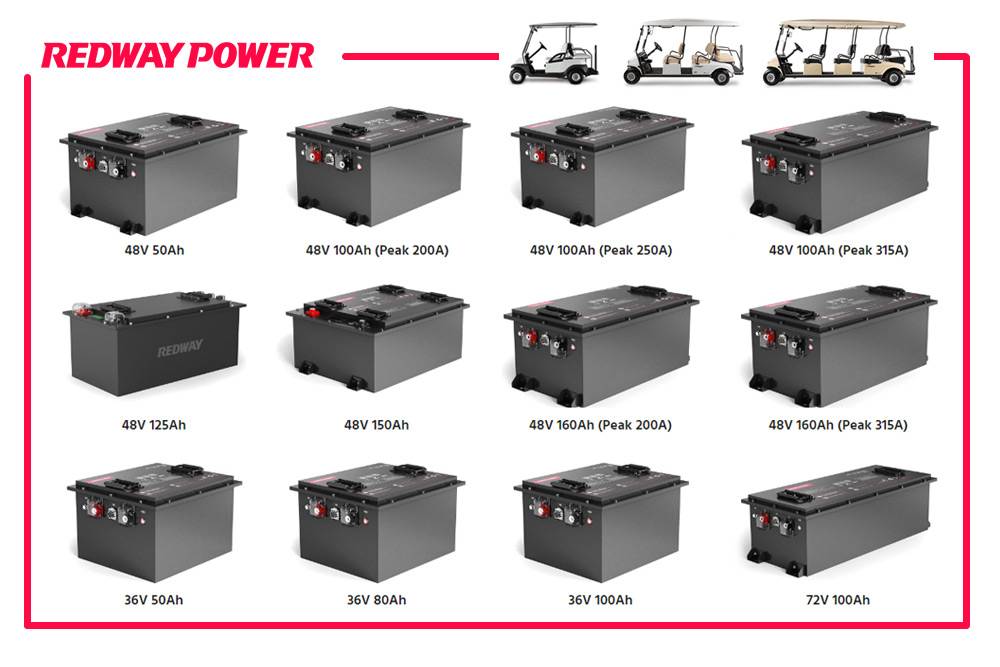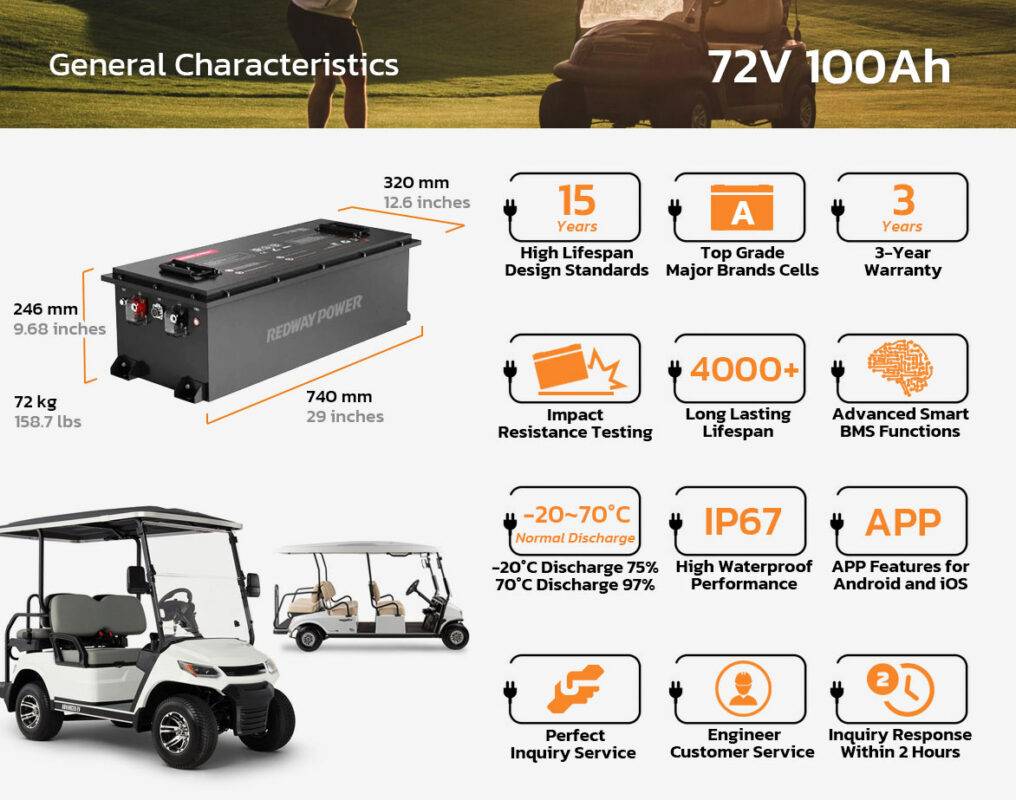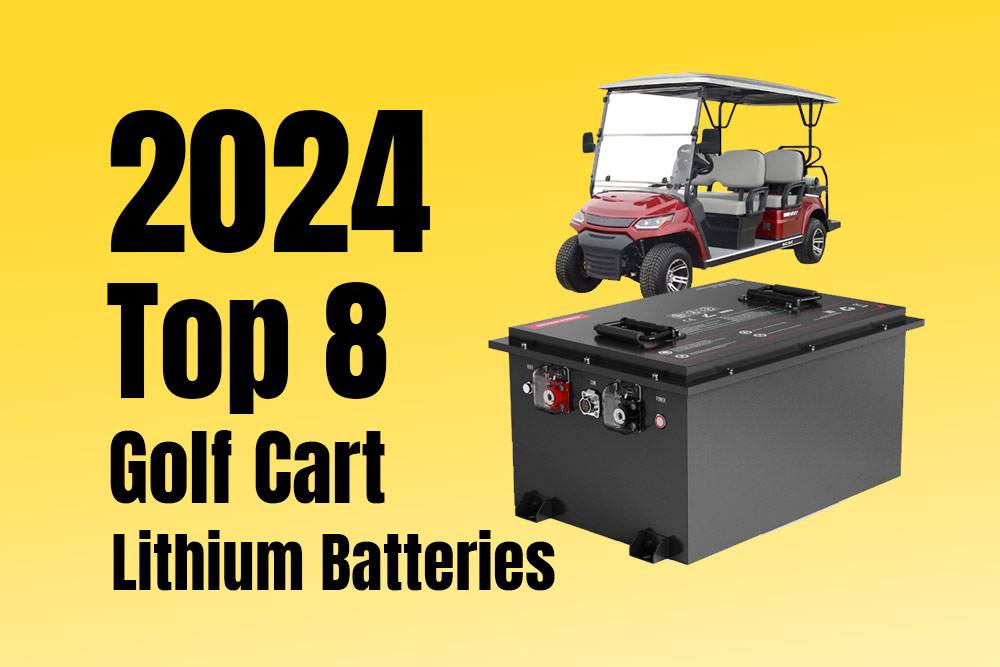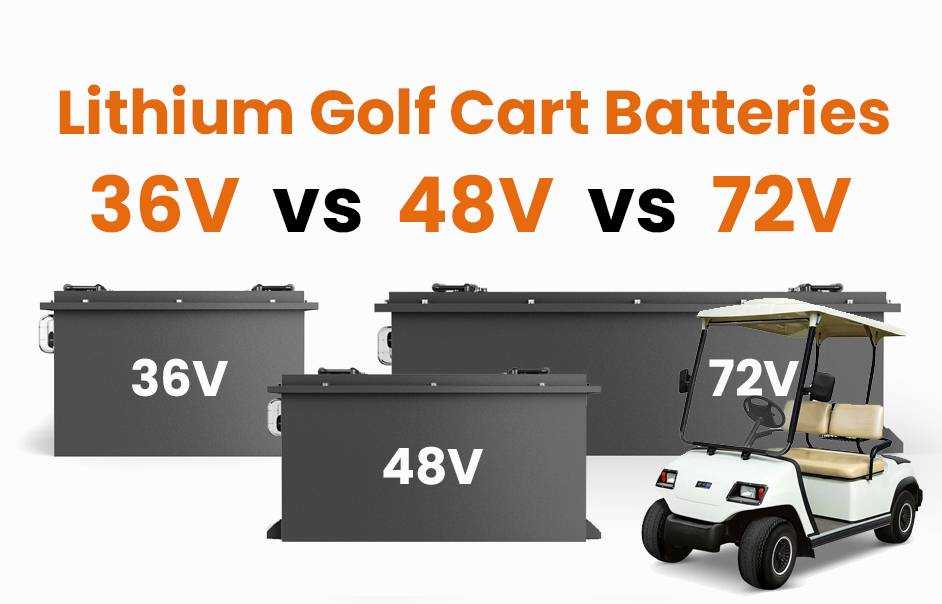Golf cart batteries are the powerhouse behind electric golf carts, essential for their operation and performance. They come in various voltages and capacities to meet the needs of an array of golf cart models and brands. From 6-volt, 8-volt, to 12-volt configurations, these batteries determine how far and how long a golf cart can travel on a single charge. The type of battery—whether lead-acid or lithium—plays a significant role in the cart’s maintenance, longevity, and overall cost-effectiveness.
Beyond the batteries themselves, a range of accessories such as battery meters, watering systems, and chargers are vital for maintaining the health and efficiency of golf cart batteries. These accessories not only help to extend the life of the batteries but can also enhance the golf cart’s performance. Proper care and maintenance of batteries can lead to a more reliable and longer-lasting golf cart experience.
The market offers a selection of golf cart batteries from reputable brands, including options that boast zero maintenance and warranties extending up to 8 years. Consumers can find batteries designed to last and go farther on a single charge, ensuring that their golf cart is always ready for the course. With the rise in popularity of golf carts for both recreational and professional use, understanding the nuances of golf cart batteries and accessories is crucial for optimal functionality and durability.
Understanding Golf Cart Batteries
Golf cart batteries are the powerhouse behind electric golf carts. They come in two primary types: lead-acid and lithium-ion batteries. Lead-acid batteries have been quite common and are known for their cost-effectiveness. Lithium batteries, on the other hand, are gaining popularity due to their longer life span and faster charging time.
Flooded lead-acid batteries require regular maintenance, such as checking water levels and cleaning terminals to prevent corrosion. These are often cheaper but entail a diligent maintenance routine. For those seeking maintenance-free options, sealed lead-acid batteries are available, which eliminate the need for water top-up.
Lithium-ion batteries are rechargeable and offer several advantages over lead-acid batteries. They are typically maintenance-free, lighter in weight, and have a high energy density, thus providing a longer range per charge. Consequently, they are the preferred choice for those prioritizing convenience and performance.
The deep cycle battery is another term prevalent in the discussions about golf cart batteries. It’s designed to provide steady power over a long period and to withstand frequent discharging and recharging cycles. Both lead-acid and lithium battery options offer deep-cycle capabilities, but they differ in longevity and efficiency.
When choosing a battery for a golf cart, considerations should include durability, charge times, capacity, and the operational costs involved in upkeep. Golf carts typically require a 36V or 48V battery configuration to operate efficiently.
In summary, selecting the right golf cart battery involves balancing between initial investment and the long-term benefits. Considering factors like type, maintenance, and capacity will ensure optimal performance and convenience for golf cart users.
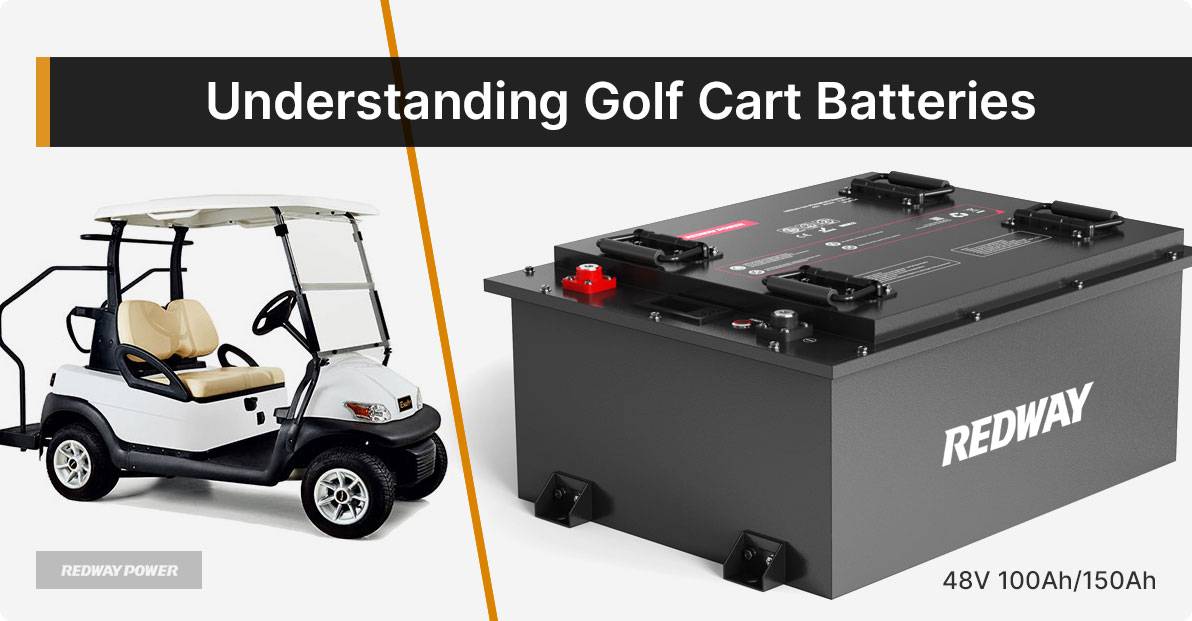
Types of Golf Cart Batteries
Choosing the right golf cart battery can impact the performance and maintenance of your vehicle. Golf cart batteries vary in terms of type, voltage, and capacity, which are essential factors to consider for efficiency and longevity.
Lithium Golf Cart Batteries
Lithium golf cart batteries are known for being lightweight and offering low maintenance. They have a longer lifespan compared to traditional lead acid batteries and can provide consistent power even as they discharge. Many golf cart owners opt for lithium batteries due to their quick charging times and environmental efficiency.
- Voltage Variations: Commonly available in 12V, 36V, and 48V configurations.
- Attributes:
- Weight: Significantly lighter than lead acid batteries.
- Maintenance: Very minimal maintenance required.
Lead Acid Golf Cart Batteries
Lead acid batteries, specifically flooded lead-acid batteries, are a longstanding choice for golf carts. They have proven reliability but require regular maintenance, including water level checks and terminal cleaning, to ensure peak performance. Models like the T-105 and T-875 are common and typically rated at 225Ah, delineating their capacity.
- Voltage Variations: Typically available in 6V, 8V, and 12V units.
- Attributes:
- Flooded Lead-Acid: Require topping up with distilled water.
- Maintenance: Regular cleaning and inspection are crucial.
Voltage Variations
The voltage of golf cart batteries can significantly affect the cart’s range and power. Standard golf carts usually operate with either 36v or 48v systems, which may consist of six 6V batteries, six 8V batteries, or four 12V batteries depending on the required power supply. The choice of voltage will influence the type and number of batteries needed for a golf cart.
- 36V systems: Typically use six 6V batteries.
- 48V systems: Can be powered by four 12V batteries or six 8V batteries.
- Capacity: Measured in ampere-hours (Ah), such as 225Ah, indicating the battery’s storage capacity.
Selecting the Best Golf Cart Batteries
When in the market for golf cart batteries, it’s crucial to consider performance, longevity, and maintenance needs. There are several top contenders known for their reliability and efficiency in powering golf carts.
Lithium golf cart batteries are a popular choice due to their lighter weight and faster charging time. Brands like Allied Lithium and Big Battery offer these advantages, with the added benefit of longer life spans compared to traditional lead-acid batteries.
Trojan has a longstanding reputation, and their deep cycle batteries are favored for enduring rough terrains and frequent usage. They provide a consistent power output and are less prone to degradation, making them a solid option for heavy-duty use.
Another notable brand is ECO Battery, which delivers high performance while focusing on eco-friendliness. Their batteries are designed for a variety of golf carts, ensuring a good fit for specific power requirements.
Lastly, Allied Lithium batteries stand out for their integration of advanced Battery Management Systems (BMS) that protect against common battery issues and extend their operational lifespan.
| Brand | Type | Benefit |
|---|---|---|
| Allied Lithium | Lithium | Advanced BMS, longevity |
| Trojan | Lead-Acid | Durability, reliability |
| Big Battery | Lithium | Lightweight, fast charging |
| ECO Battery | Various | Eco-friendly, versatile |
Prospective buyers should weigh the upfront cost against long-term benefits. Lithium batteries, though initially more expensive, may offer savings over time due to less frequent replacements and maintenance. Always ensure compatibility with your golf cart model and consider the manufacturer’s warranty for additional peace of mind.
Replacement and Upgrade Procedures
When one decides to replace or upgrade their golf cart’s battery pack, there are systematic steps they should follow. Battery replacement is crucial when they exhibit reduced performance or fail to hold a charge.
Step 1: Identifying the Battery Specifications
The first step involves identifying the correct type of battery pack required, which is typically 36-volt, 48-volt, or 72-volt for golf carts.
Step 2: Preparation
- Ensure the golf cart is on flat ground and turned off.
- One should put on protective gear, such as gloves and safety glasses.
Step 3: Removing the Old Batteries
- Disconnect cables, starting with the negative terminal.
- Carefully remove the old batteries.
Step 4: Installing the New Batteries
- Clean battery tray and check for corrosion or damage.
- Place new batteries in the tray.
- Reconnect cables, starting with the positive terminal.
If upgrading to lithium batteries, they will find the process slightly different. Lithium batteries typically require a specific type of charger and may necessitate a new battery tray or additional components to fit securely.
Step 5: Performance Test
- Verify all connections are secure.
- Turn on the golf cart and test the functionality of the new batteries.
Proper installation and testing ensure the golf cart operates at its optimal capacity with the newly installed battery pack. Golfers looking for Golf Cart Batteries & Chargers can choose from a variety of options to meet their performance needs and budget. For detailed guidance, one might follow a Step-by-Step Guide to Replacing Your Golf Cart Battery, which walks through the process thoroughly.
Golf Cart Battery Maintenance
Maintaining golf cart batteries is pivotal to ensure their longevity and optimal performance. Whether owners have lead acid or lithium batteries, regular checks and careful adherence to maintenance procedures can significantly extend a battery’s lifespan.
Lead Acid Batteries:
For lead acid batteries, which are commonly used deep cycle batteries, maintenance involves:
- Checking Water Levels:
- Every 15–30 days, or after every 10 charging cycles.
- After charging, ensure water covers the plates, add only distilled water when needed.
- Cleaning Terminals:
- Dissolve one tablespoon of baking soda into a cup of hot water.
- Use a wire brush to gently clean corrosion from the terminals.
- Rinse with water and dry thoroughly.
- Equalizing Charge:
- Perform an equalizing charge once every month to balance cell charge levels.
- This helps in removing sulfate build-up on the plates.
Lithium Batteries:
Lithium batteries require less maintenance compared to lead acid. Here are the key practices:
- Regular Inspection:
- They seldom need watering but conduct monthly visual inspections for any physical damage or loose connections.
- Do Not Over-discharge:
- Protect battery lifespan by avoiding complete discharge before recharging.
- Keep at Optimal Temperature:
- Store and charge in areas that are neither too hot nor too cold to prevent capacity loss.
Across both types, it’s essential to follow the manufacturer’s guidance on charging practices and to routinely inspect for any signs of damage or wear. Employing these maintenance strategies helps in promoting safer operations, reliable performance, and extended use of golf cart batteries. For detailed guidelines on the care required, refer to informative guides like The Ultimate Guide to Golf Cart Battery Maintenance.
Accessories for Golf Carts
Upgrading your golf cart with the right accessories can enhance performance, increase safety, and even express personal style. From performance boosts to maintenance essentials, there’s a wide array of add-ons that cater to various needs and preferences.
Performance Enhancing Accessories
To improve your golf cart’s power and efficiency, consider upgrading with performance-enhancing accessories. Custom controllers and upgraded motors can significantly boost speed and torque. Battery upgrades ensure extended range and reliability, with options such as the Trojan T-875 offering formidable energy output.
- Motor Controllers: Upgraded units may allow for faster acceleration.
- Batteries: Enhanced models like T-875 ensure longer life and better performance.
Comfort and Aesthetic Accessories
Golf cart owners often personalize their vehicles with comfort and aesthetic accessories to enjoy a more enjoyable ride. Seat covers not only add a personal touch but also provide additional comfort. Custom paint jobs and LED lighting can make your golf cart stand out on the course or the streets.
- Seat Covers: Available in various materials for improved comfort and style.
- LED Lighting: Offers custom looks and improved visibility for evening rides.
Safety and Maintenance Accessories
Regular maintenance is essential to keep your golf cart in top condition, while safety upgrades protect both the driver and passengers. Onboard battery maintenance systems and voltage indicators keep you informed of your battery’s health. Meanwhile, adding reflective elements and proper lighting ensures visibility to others during low-light conditions.
- Voltage Indicators: Monitor battery status to prevent unexpected power loss.
- Reflective Elements: Enhance visibility and safety during dusk or night-time use.
Versatile Use Accessories
For those who use their golf carts beyond the golf course, in marine or RV settings, or as utility vehicles, having versatile use accessories is crucial. These can include towing hitches for trailers, utility boxes for storage, and enclosures to protect from the elements. Such accessories transform a simple golf cart into a multipurpose electric vehicle.
- Towing Hitches: Enable the attachment of trailers or other haulable equipment.
- Utility Boxes: Provide secure storage for carrying tools, supplies, or personal items.
By thoughtfully selecting and installing the appropriate accessories, one can customize a golf cart to be not just a simple vehicle for traversing the green but a functional and personalized electric vehicle for various uses.
Golf Cart Brands and Models
When selecting a golf cart, understanding the different brands and their specific models is crucial to making an informed decision. Each brand offers a range of models tailored to various needs, from casual use to heavy-duty applications.
Club Car Models
Club Car stands as a reputable name in the golf cart industry, known for its high-quality vehicles. Among their popular models, the Club Car Precedent serves as a top choice for its versatility and comfort. Moreover, the Club Car Onward offers customizable options, ranging from performance features to aesthetic modifications.
Yamaha Golf Carts
Yamaha, a brand synonymous with durability and advanced technology, presents models like the Yamaha Drive2 which boasts a quiet, fuel-efficient engine and a spacious cabin. Their Yamaha Adventurer series caters to those needing extra power and space, ideal for tasks that demand more than just transportation.
Ezgo Golf Carts
EZGO is another leader in the golf cart domain, offering efficient and sturdy carts. The EZGO RXV delivers exceptional performance with an innovative AC Drive. For those prioritizing utility, the EZGO TXT is a model that combines comfort, efficiency, and a classic design, making it suitable for diverse settings.
Support and Customer Service
Golf cart owners often require assistance with their vehicles, whether it be for maintenance, repairs, or upgrades. Customer service in this niche market is specialized and focused on providing tailored support for golf cart enthusiasts.
The customer service teams at various suppliers are trained to understand the intricacies of different golf cart models. They offer real-time assistance through multiple channels like phone support at 1-800-401-2934, live chat, or email. Business hours are typically Monday to Friday, 9 am to 5 pm EST, ensuring that owners can receive help during standard working hours.
| Contact Method | Details |
|---|---|
| Phone | 1-800-401-2934 |
| Available on website | |
| Live Chat | Real-time help on website |
| Business Hours | Monday – Friday 9am – 5pm EST |
Certain companies stand behind the quality of their products and encourage communication with their support team regarding questions before and after a purchase. Additionally, some services include arranging servicing for golf carts starting at minimal costs, plus shipping and parts.
For specific parts and accessories, golf cart parts and accessories services provide detailed information and support to ensure customers make informed decisions. They pride themselves on the human touch, valuing voice communication and interaction with a real person. Free shipping might also be offered on orders over a certain amount, adding to the customer’s satisfaction and convenience.
Maintaining good customer relations and providing the necessary support play a crucial role in the overall maintenance and longevity of golf carts, underpinning the dedication of suppliers to their clientele.
Frequently Asked Questions
In the realm of golf carts, battery maintenance and selection are crucial for optimal performance and longevity. This section addresses the essentials, providing insights into proper upkeep, cost factors, sizing, types, replacement timelines, and necessary accessories.
How do you properly maintain golf cart batteries for longer lifespan?
Proper maintenance of golf cart batteries involves regular cleaning of terminals, ensuring tight connections, and maintaining the correct water levels after charging. Charging routines should also be consistent and complete to avoid reducing battery life.
What factors determine the cost of a golf cart battery?
Factors that influence the cost of a golf cart battery include the type of battery (lead-acid or lithium), capacity, voltage, brand, and where it is purchased. Generally, Lithium batteries tend to be more expensive initially but may offer savings over time due to longer lifespan and less maintenance.
How do I determine the correct battery size for my golf cart?
The correct battery size for a golf cart is dependent on the manufacturer’s specifications and the electrical demands of the cart. It is critical to consult the owner’s manual for size and voltage requirements and assess the physical space available for batteries to ensure a proper fit.
What are the differences between lead-acid and lithium golf cart batteries?
Lead-acid batteries are traditional and require regular maintenance, including water top-ups, while lithium batteries are maintenance-free with a longer lifecycle and generally higher upfront costs. Lithium batteries also tend to be lighter and offer more consistent power output.
How often should golf cart batteries be replaced?
The lifespan of golf cart batteries can vary, but on average, lead-acid batteries should be replaced every 4-6 years, while lithium batteries can last up to 10 years. Battery life can be extended with proper maintenance and usage patterns.
What accessories are essential for optimizing golf cart battery performance?
Accessories that optimize battery performance include a quality charger that matches the battery type, battery watering systems for lead-acid types, and corrosion-prevention sprays to protect terminals and cables. Proper tire inflation and regular inspections also contribute to optimal battery performance.



